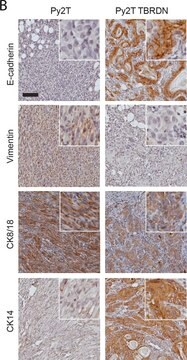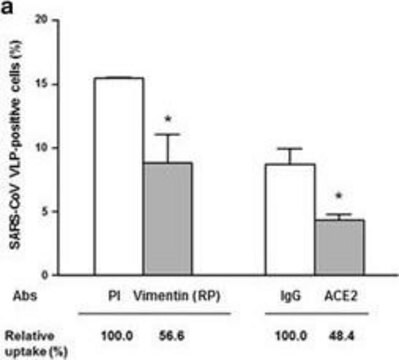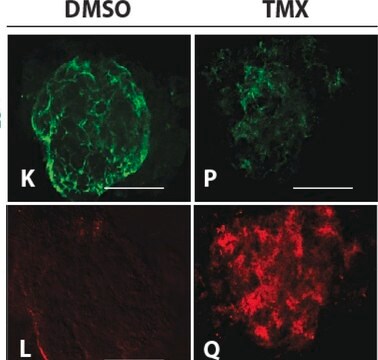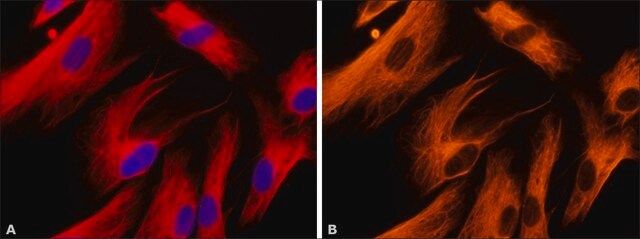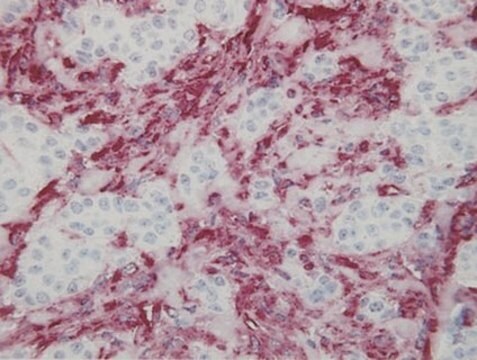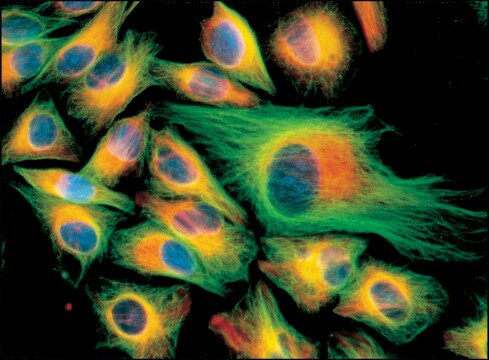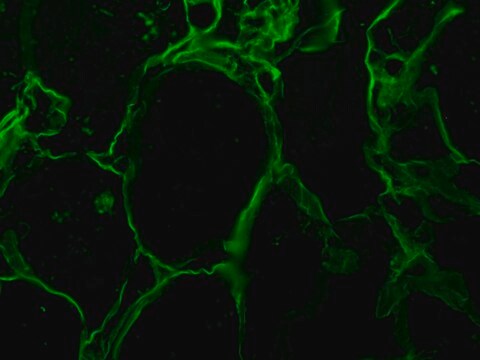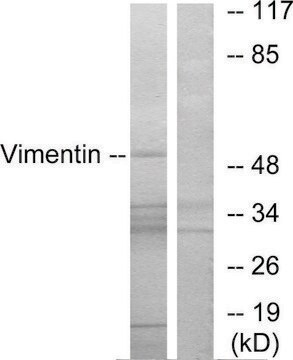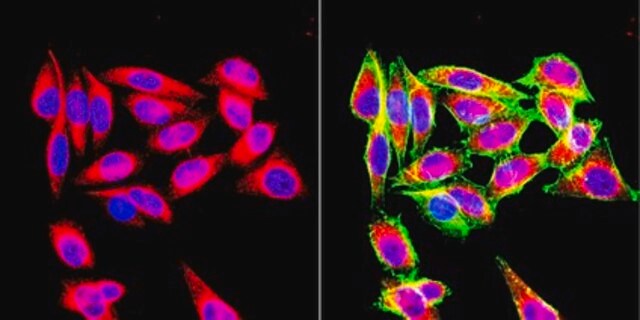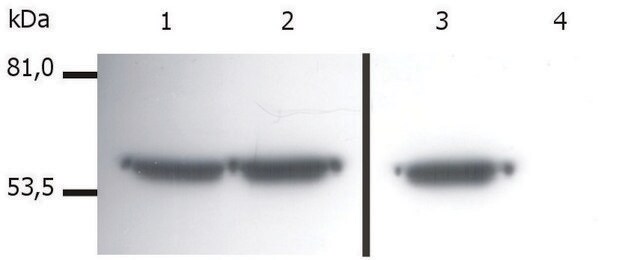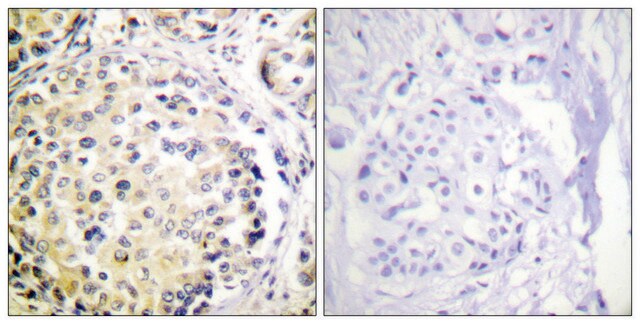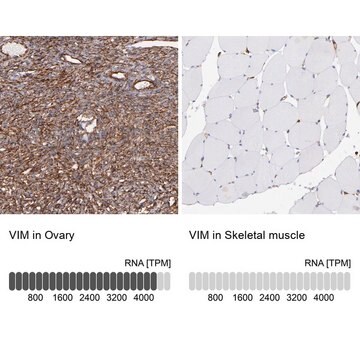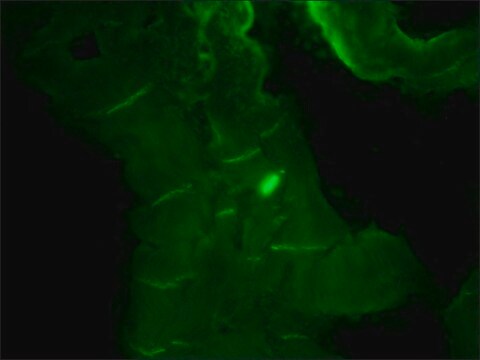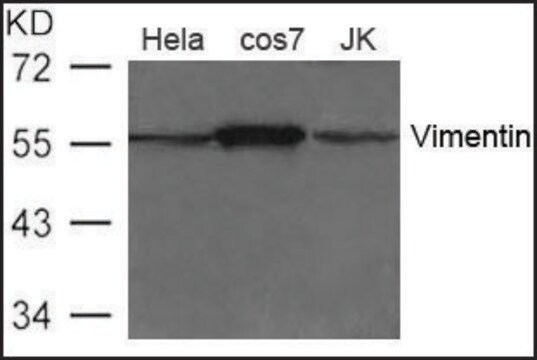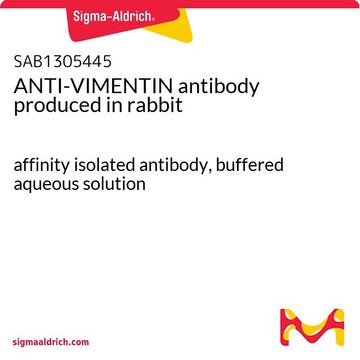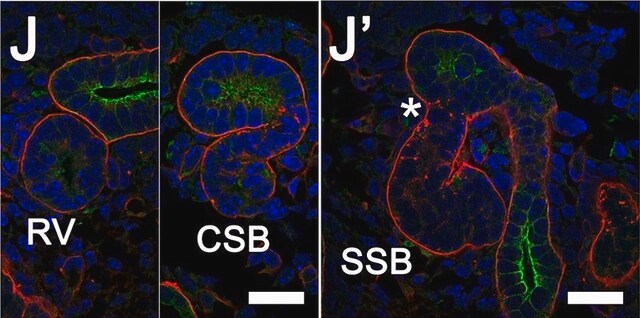V6630
Anti-Vimentin Antibody
mouse monoclonal, V9
Sinonimo/i:
Monoclonal Anti-Vimentin
About This Item
Prodotti consigliati
Nome del prodotto
Monoclonal Anti-Vimentin antibody produced in mouse, clone V9, ascites fluid
Origine biologica
mouse
Livello qualitativo
Coniugato
unconjugated
Forma dell’anticorpo
ascites fluid
Tipo di anticorpo
primary antibodies
Clone
V9, monoclonal
PM
antigen ~58 kDa
contiene
15 mM sodium azide
Reattività contro le specie
pig, canine, feline, hamster, rabbit, gerbil, monkey, bovine, chicken, human, horse, rat
tecniche
immunohistochemistry (formalin-fixed, paraffin-embedded sections): 1:40 using human tissue
western blot: 1:200 using human fibroblasts HS-68
Isotipo
IgG1
N° accesso UniProt
Condizioni di spedizione
dry ice
Temperatura di conservazione
−20°C
modifica post-traduzionali bersaglio
unmodified
Informazioni sul gene
human ... VIM(7431)
rat ... Vim(81818)
Cerchi prodotti simili? Visita Guida al confronto tra prodotti
Descrizione generale
Specificità
Immunogeno
Applicazioni
- in immunofluorescence Analysis
- in western blot
- anti-vimentin antibody is injected into mature oocytes before embryo manipulations to bind endogenous vimentin (VIM)
- in immunocytochemistry
Azioni biochim/fisiol
Stoccaggio e stabilità
Altre note
V6389 Anti-Vimentin antibody, Mouse monoclonal
clone V9, purified from hybridoma cell culture
Esclusione di responsabilità
Non trovi il prodotto giusto?
Prova il nostro Motore di ricerca dei prodotti.
Prodotti correlati
Raccomandato
Codice della classe di stoccaggio
12 - Non Combustible Liquids
Classe di pericolosità dell'acqua (WGK)
nwg
Punto d’infiammabilità (°F)
Not applicable
Punto d’infiammabilità (°C)
Not applicable
Scegli una delle versioni più recenti:
Possiedi già questo prodotto?
I documenti relativi ai prodotti acquistati recentemente sono disponibili nell’Archivio dei documenti.
I clienti hanno visto anche
Articoli
High titer lentiviral particles including beta-actin, alpha-tubulin and vimentin used for live cell analysis of cytoskeleton structure proteins.
Il team dei nostri ricercatori vanta grande esperienza in tutte le aree della ricerca quali Life Science, scienza dei materiali, sintesi chimica, cromatografia, discipline analitiche, ecc..
Contatta l'Assistenza Tecnica.
